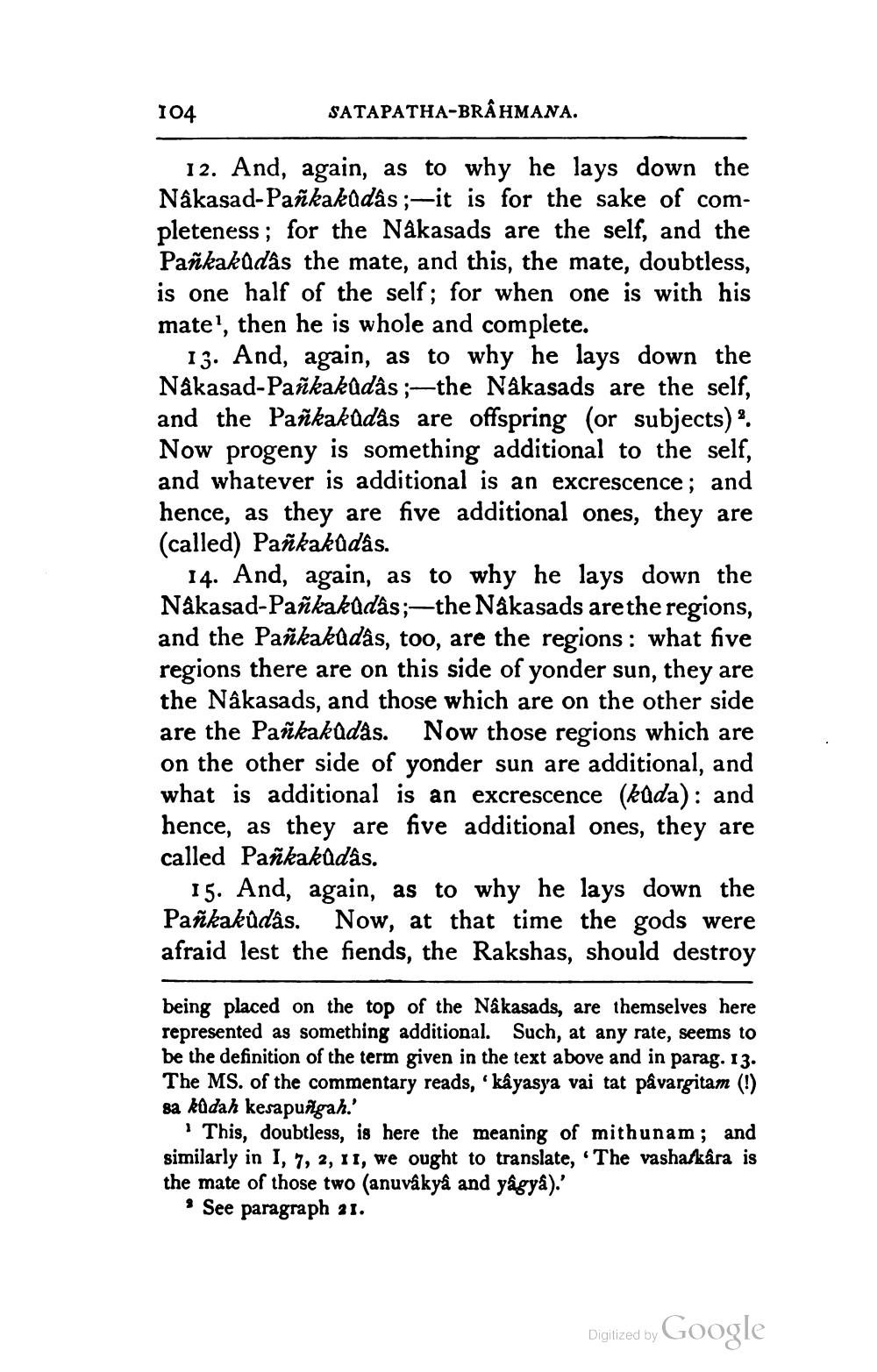________________
104
SATAPATHA-BRAHMANA.
12. And, again, as to why he lays down the Nakasad-Pañkakādas ;—it is for the sake of completeness; for the Nâkasads are the self, and the Pañkakudas the mate, and this, the mate, doubtless, is one half of the self; for when one is with his mate', then he is whole and complete.
13. And, again, as to why he lays down the Nakasad-Pañkakudàs ;—the Nakasads are the self, and the Pañkakadàs are offspring (or subjects) %. Now progeny is something additional to the self, and whatever is additional is an excrescence; and hence, as they are five additional ones, they are (called) Pañkakadás.
14. And, again, as to why he lays down the Nakasad-Pañkakadás;—the Nâkasads are the regions, and the Pañkakadás, too, are the regions : what five regions there are on this side of yonder sun, they are the Nâkasads, and those which are on the other side are the Pañkakadàs. Now those regions which are on the other side of yonder sun are additional, and what is additional is an excrescence (kuda): and hence, as they are five additional ones, they are called Pañkakādas.
15. And, again, as to why he lays down the Pañkakůdâs. Now, at that time the gods were afraid lest the fiends, the Rakshas, should destroy
being placed on the top of the Nakasads, are themselves here represented as something additional. Such, at any rate, seems to be the definition of the term given in the text above and in parag. 13. The MS. of the commentary reads, 'kâyasya vai tat påvargitam (!) sa küdah kesapungah.'
'This, doubtless, is here the meaning of mithunam; and similarly in 1, 7, 2, 11, we ought to translate, The vasha kåra is the mate of those two (anuvâkyâ and yagyá).'
. See paragraph 21.
Digilized by Google




